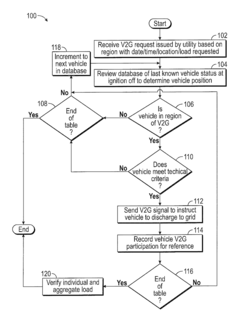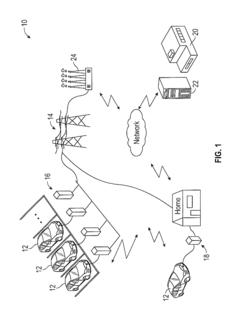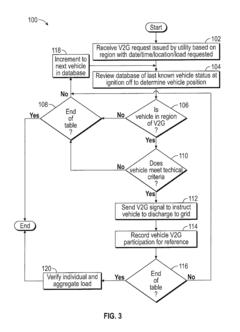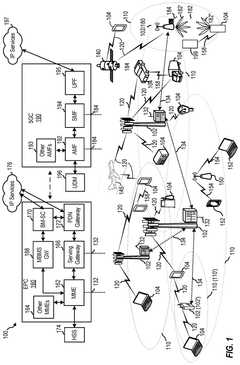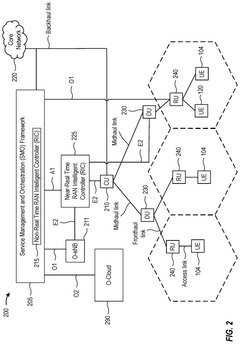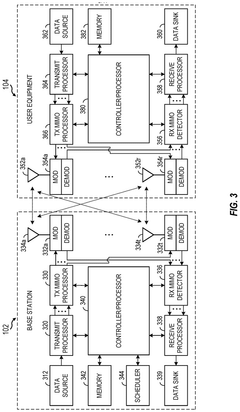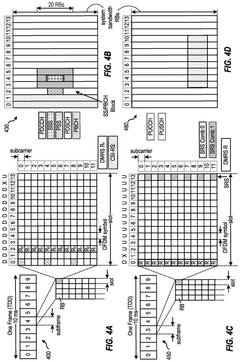How to Develop Scalable V2G Infrastructure?
AUG 8, 20259 MIN READ
Generate Your Research Report Instantly with AI Agent
Patsnap Eureka helps you evaluate technical feasibility & market potential.
V2G Technology Evolution and Objectives
Vehicle-to-Grid (V2G) technology has evolved significantly over the past decade, driven by the increasing adoption of electric vehicles (EVs) and the growing need for grid flexibility. The concept of V2G emerged in the late 1990s, but it wasn't until the 2010s that practical implementations began to take shape. The primary objective of V2G technology is to enable bidirectional power flow between EVs and the electrical grid, allowing EVs to serve as mobile energy storage units.
The evolution of V2G technology has been closely tied to advancements in EV battery technology, power electronics, and smart grid infrastructure. Early V2G systems were limited by battery degradation concerns and inefficient power conversion. However, recent developments in battery management systems and power electronics have significantly improved the feasibility and efficiency of V2G operations.
One of the key objectives of V2G technology is to enhance grid stability and reliability. By leveraging the distributed energy storage capacity of EVs, V2G systems aim to provide ancillary services such as frequency regulation, voltage support, and peak shaving. This can help utilities manage the increasing penetration of intermittent renewable energy sources and reduce the need for costly grid upgrades.
Another important goal of V2G technology is to create new value streams for EV owners. By participating in V2G programs, EV owners can potentially generate revenue by selling excess energy back to the grid during peak demand periods or providing grid services. This economic incentive is crucial for encouraging wider adoption of V2G-enabled vehicles and infrastructure.
Scalability is a critical objective in the development of V2G infrastructure. As the number of EVs on the road continues to grow, V2G systems must be designed to accommodate a large fleet of vehicles without compromising grid stability or user convenience. This requires advanced communication protocols, robust cybersecurity measures, and intelligent load management algorithms.
Interoperability is another key focus area in V2G technology evolution. Standardization efforts, such as the development of ISO 15118 and OpenADR protocols, aim to ensure seamless communication between EVs, charging stations, and grid operators across different manufacturers and regions. This interoperability is essential for creating a scalable and efficient V2G ecosystem.
Looking ahead, the objectives of V2G technology development include improving the speed and efficiency of bidirectional charging, reducing the cost of V2G-enabled hardware, and developing more sophisticated energy management systems. These advancements will be crucial in realizing the full potential of V2G as a key component of future smart grids and sustainable energy systems.
The evolution of V2G technology has been closely tied to advancements in EV battery technology, power electronics, and smart grid infrastructure. Early V2G systems were limited by battery degradation concerns and inefficient power conversion. However, recent developments in battery management systems and power electronics have significantly improved the feasibility and efficiency of V2G operations.
One of the key objectives of V2G technology is to enhance grid stability and reliability. By leveraging the distributed energy storage capacity of EVs, V2G systems aim to provide ancillary services such as frequency regulation, voltage support, and peak shaving. This can help utilities manage the increasing penetration of intermittent renewable energy sources and reduce the need for costly grid upgrades.
Another important goal of V2G technology is to create new value streams for EV owners. By participating in V2G programs, EV owners can potentially generate revenue by selling excess energy back to the grid during peak demand periods or providing grid services. This economic incentive is crucial for encouraging wider adoption of V2G-enabled vehicles and infrastructure.
Scalability is a critical objective in the development of V2G infrastructure. As the number of EVs on the road continues to grow, V2G systems must be designed to accommodate a large fleet of vehicles without compromising grid stability or user convenience. This requires advanced communication protocols, robust cybersecurity measures, and intelligent load management algorithms.
Interoperability is another key focus area in V2G technology evolution. Standardization efforts, such as the development of ISO 15118 and OpenADR protocols, aim to ensure seamless communication between EVs, charging stations, and grid operators across different manufacturers and regions. This interoperability is essential for creating a scalable and efficient V2G ecosystem.
Looking ahead, the objectives of V2G technology development include improving the speed and efficiency of bidirectional charging, reducing the cost of V2G-enabled hardware, and developing more sophisticated energy management systems. These advancements will be crucial in realizing the full potential of V2G as a key component of future smart grids and sustainable energy systems.
V2G Market Demand Analysis
The market demand for Vehicle-to-Grid (V2G) infrastructure is experiencing significant growth, driven by the increasing adoption of electric vehicles (EVs) and the need for grid stability. As the global EV market expands, the potential for V2G technology to provide grid services and generate additional revenue for EV owners is becoming more apparent.
The primary market for V2G infrastructure is currently centered in regions with high EV penetration and progressive energy policies. Countries like Denmark, the Netherlands, and Japan have been at the forefront of V2G pilot projects and implementations. In these markets, the demand for V2G solutions is driven by the desire to integrate renewable energy sources more effectively and manage peak load demands on the electrical grid.
Utility companies represent a significant segment of the V2G market, as they seek to leverage EV batteries as distributed energy resources. This allows them to improve grid reliability, reduce infrastructure costs, and better manage the intermittency of renewable energy sources. The demand from utilities is expected to grow as more regulatory frameworks support the integration of V2G services into grid operations.
Fleet operators, particularly those managing large numbers of EVs, are another key market segment for V2G infrastructure. These operators see V2G as an opportunity to offset charging costs and generate additional revenue by providing grid services during vehicle downtime. The demand from this sector is likely to increase as more companies electrify their fleets and seek to maximize the return on their EV investments.
Residential EV owners represent a growing market for V2G technology, although this segment faces challenges related to the high costs of bidirectional charging equipment and concerns about battery degradation. However, as technology improves and costs decrease, the residential market is expected to expand, driven by the potential for reduced electricity bills and the ability to contribute to grid stability.
The market demand for V2G infrastructure is closely tied to the development of smart grid technologies and the increasing focus on decentralized energy systems. As power grids become more digitized and capable of real-time management, the value proposition of V2G services becomes more compelling, driving further demand for scalable infrastructure solutions.
Regulatory support and incentive programs play a crucial role in shaping market demand for V2G infrastructure. Regions with favorable policies that recognize the value of V2G services and provide financial incentives for participation are likely to see accelerated adoption and increased market demand.
As the EV market continues to grow and energy systems evolve, the demand for V2G infrastructure is expected to expand significantly. Market research indicates that the global V2G market could reach several billion dollars by 2030, with a compound annual growth rate in the double digits. This growth will be driven by the increasing need for grid flexibility, the rising number of EVs on the roads, and the ongoing development of more efficient and cost-effective V2G technologies.
The primary market for V2G infrastructure is currently centered in regions with high EV penetration and progressive energy policies. Countries like Denmark, the Netherlands, and Japan have been at the forefront of V2G pilot projects and implementations. In these markets, the demand for V2G solutions is driven by the desire to integrate renewable energy sources more effectively and manage peak load demands on the electrical grid.
Utility companies represent a significant segment of the V2G market, as they seek to leverage EV batteries as distributed energy resources. This allows them to improve grid reliability, reduce infrastructure costs, and better manage the intermittency of renewable energy sources. The demand from utilities is expected to grow as more regulatory frameworks support the integration of V2G services into grid operations.
Fleet operators, particularly those managing large numbers of EVs, are another key market segment for V2G infrastructure. These operators see V2G as an opportunity to offset charging costs and generate additional revenue by providing grid services during vehicle downtime. The demand from this sector is likely to increase as more companies electrify their fleets and seek to maximize the return on their EV investments.
Residential EV owners represent a growing market for V2G technology, although this segment faces challenges related to the high costs of bidirectional charging equipment and concerns about battery degradation. However, as technology improves and costs decrease, the residential market is expected to expand, driven by the potential for reduced electricity bills and the ability to contribute to grid stability.
The market demand for V2G infrastructure is closely tied to the development of smart grid technologies and the increasing focus on decentralized energy systems. As power grids become more digitized and capable of real-time management, the value proposition of V2G services becomes more compelling, driving further demand for scalable infrastructure solutions.
Regulatory support and incentive programs play a crucial role in shaping market demand for V2G infrastructure. Regions with favorable policies that recognize the value of V2G services and provide financial incentives for participation are likely to see accelerated adoption and increased market demand.
As the EV market continues to grow and energy systems evolve, the demand for V2G infrastructure is expected to expand significantly. Market research indicates that the global V2G market could reach several billion dollars by 2030, with a compound annual growth rate in the double digits. This growth will be driven by the increasing need for grid flexibility, the rising number of EVs on the roads, and the ongoing development of more efficient and cost-effective V2G technologies.
V2G Infrastructure Challenges
Vehicle-to-Grid (V2G) technology holds immense potential for revolutionizing energy management and grid stability. However, the development of scalable V2G infrastructure faces several significant challenges that must be addressed to ensure widespread adoption and effectiveness.
One of the primary obstacles is the lack of standardization across charging protocols and communication systems. Different electric vehicle (EV) manufacturers and charging station providers often use proprietary technologies, making it difficult to create a unified V2G ecosystem. This fragmentation hinders interoperability and increases implementation costs, ultimately slowing down the deployment of V2G infrastructure at scale.
The high initial investment required for V2G-capable charging stations and grid upgrades presents another substantial barrier. Many utility companies and infrastructure developers are hesitant to commit significant resources without clear evidence of long-term profitability. This chicken-and-egg problem delays the widespread implementation of V2G technology, as both EV adoption and infrastructure development need to progress simultaneously.
Battery degradation concerns also pose a challenge to V2G adoption. Frequent charging and discharging cycles associated with V2G operations may accelerate battery wear, potentially reducing the lifespan of EVs. This issue raises questions about the long-term viability of V2G and may deter EV owners from participating in V2G programs without adequate compensation or guarantees.
Grid integration and management complexities further complicate the scaling of V2G infrastructure. Balancing the dynamic nature of EV charging and discharging with grid stability requirements demands sophisticated control systems and predictive algorithms. Utility companies must invest in advanced grid management technologies to effectively coordinate V2G operations without compromising power quality or reliability.
Regulatory and policy frameworks present additional hurdles. Many regions lack clear guidelines for V2G implementation, creating uncertainty for stakeholders. Issues such as energy market participation rules, compensation mechanisms for EV owners, and liability concerns need to be addressed to create a supportive environment for V2G infrastructure development.
Cybersecurity and data privacy concerns also pose significant challenges. The bidirectional flow of energy and information in V2G systems creates potential vulnerabilities that could be exploited by malicious actors. Ensuring robust security measures and protecting sensitive user data are critical for building trust and encouraging participation in V2G programs.
Lastly, consumer awareness and acceptance remain obstacles to overcome. Many EV owners are unfamiliar with V2G technology and its benefits, while others may be reluctant to allow external control of their vehicle's battery. Educating the public and demonstrating the value proposition of V2G will be crucial for achieving the critical mass necessary for scalable infrastructure development.
One of the primary obstacles is the lack of standardization across charging protocols and communication systems. Different electric vehicle (EV) manufacturers and charging station providers often use proprietary technologies, making it difficult to create a unified V2G ecosystem. This fragmentation hinders interoperability and increases implementation costs, ultimately slowing down the deployment of V2G infrastructure at scale.
The high initial investment required for V2G-capable charging stations and grid upgrades presents another substantial barrier. Many utility companies and infrastructure developers are hesitant to commit significant resources without clear evidence of long-term profitability. This chicken-and-egg problem delays the widespread implementation of V2G technology, as both EV adoption and infrastructure development need to progress simultaneously.
Battery degradation concerns also pose a challenge to V2G adoption. Frequent charging and discharging cycles associated with V2G operations may accelerate battery wear, potentially reducing the lifespan of EVs. This issue raises questions about the long-term viability of V2G and may deter EV owners from participating in V2G programs without adequate compensation or guarantees.
Grid integration and management complexities further complicate the scaling of V2G infrastructure. Balancing the dynamic nature of EV charging and discharging with grid stability requirements demands sophisticated control systems and predictive algorithms. Utility companies must invest in advanced grid management technologies to effectively coordinate V2G operations without compromising power quality or reliability.
Regulatory and policy frameworks present additional hurdles. Many regions lack clear guidelines for V2G implementation, creating uncertainty for stakeholders. Issues such as energy market participation rules, compensation mechanisms for EV owners, and liability concerns need to be addressed to create a supportive environment for V2G infrastructure development.
Cybersecurity and data privacy concerns also pose significant challenges. The bidirectional flow of energy and information in V2G systems creates potential vulnerabilities that could be exploited by malicious actors. Ensuring robust security measures and protecting sensitive user data are critical for building trust and encouraging participation in V2G programs.
Lastly, consumer awareness and acceptance remain obstacles to overcome. Many EV owners are unfamiliar with V2G technology and its benefits, while others may be reluctant to allow external control of their vehicle's battery. Educating the public and demonstrating the value proposition of V2G will be crucial for achieving the critical mass necessary for scalable infrastructure development.
Current V2G Solutions
01 Scalable V2G communication systems
Developing scalable communication systems for Vehicle-to-Grid (V2G) infrastructure is crucial for managing large-scale electric vehicle integration. These systems enable efficient data exchange between vehicles, charging stations, and the power grid, supporting load balancing and energy management across the network.- Scalable V2G communication systems: Developing scalable communication systems for Vehicle-to-Grid (V2G) infrastructure is crucial for managing large-scale electric vehicle integration. These systems enable efficient data exchange between vehicles, charging stations, and the power grid, supporting load balancing and energy management across the network.
- Grid capacity optimization for V2G: Optimizing grid capacity is essential for V2G infrastructure scalability. This involves developing algorithms and systems to predict and manage power demand, allocate resources efficiently, and ensure grid stability as the number of electric vehicles participating in V2G increases.
- Scalable charging station networks: Designing and implementing scalable charging station networks is crucial for V2G infrastructure growth. This includes developing modular charging station designs, smart load management systems, and efficient power distribution strategies to accommodate increasing numbers of electric vehicles.
- V2G data management and analytics: Efficient data management and analytics are essential for scaling V2G infrastructure. This involves developing systems for collecting, processing, and analyzing large volumes of data from vehicles, charging stations, and the grid to optimize energy flow, predict maintenance needs, and improve overall system performance.
- Standardization and interoperability for V2G systems: Establishing standards and ensuring interoperability among V2G components is crucial for scalability. This includes developing common protocols for communication, power transfer, and data exchange to enable seamless integration of various electric vehicles, charging stations, and grid systems from different manufacturers.
02 Grid integration and load management
Implementing advanced algorithms and control systems to manage the integration of electric vehicles into the power grid. This includes load balancing, demand response, and optimizing energy distribution to ensure grid stability and efficiency as the number of connected vehicles increases.Expand Specific Solutions03 Charging infrastructure optimization
Developing strategies to optimize the deployment and utilization of charging infrastructure. This involves predictive analytics for charging station placement, dynamic pricing models, and intelligent scheduling systems to maximize the efficiency of the V2G network as it scales.Expand Specific Solutions04 Energy storage and distribution
Incorporating distributed energy storage systems and smart grid technologies to enhance the scalability of V2G infrastructure. This includes leveraging electric vehicle batteries as grid resources and developing advanced power management systems to balance energy supply and demand across the network.Expand Specific Solutions05 Standardization and interoperability
Establishing industry-wide standards and protocols to ensure interoperability between different V2G systems, charging stations, and vehicle models. This standardization is essential for seamless integration and scalability of V2G infrastructure across diverse geographical regions and technological platforms.Expand Specific Solutions
Key V2G Industry Players
The development of scalable Vehicle-to-Grid (V2G) infrastructure is currently in its early stages, with the market showing significant growth potential. The global V2G market size is projected to expand rapidly in the coming years, driven by increasing electric vehicle adoption and the need for grid stability. Technologically, V2G systems are evolving, with companies like Samsung Electronics, Huawei, and LG Electronics leading innovation in smart charging solutions. State Grid Corporation of China and other utility companies are actively investing in V2G pilot projects, while automotive manufacturers are integrating V2G capabilities into their electric vehicles. However, challenges remain in standardization and large-scale implementation, indicating that the technology is still progressing towards full maturity.
Huawei Technologies Co., Ltd.
Technical Solution: Huawei's V2G infrastructure solution leverages its expertise in 5G technology and IoT to create a highly connected and responsive system. Their approach integrates smart charging stations with cloud-based management platforms, enabling real-time monitoring and control of energy flow between vehicles and the grid. Huawei's system employs advanced machine learning algorithms to predict EV charging patterns and optimize grid load distribution. The company has developed specialized V2G modules that can be easily integrated into existing charging infrastructure, facilitating rapid deployment. Huawei's solution also incorporates blockchain technology for secure and transparent energy transactions between EV owners and utility providers[2][4]. Additionally, their system supports vehicle-to-home (V2H) and vehicle-to-building (V2B) applications, expanding the flexibility of energy management[6].
Strengths: Strong technological capabilities, particularly in 5G and IoT integration. Weaknesses: Potential geopolitical challenges in some markets and the need to build trust in the energy sector.
Telefonaktiebolaget LM Ericsson
Technical Solution: Ericsson's approach to scalable V2G infrastructure focuses on creating a robust communication network that enables seamless interaction between EVs, charging stations, and the power grid. Their solution utilizes 5G and narrowband IoT (NB-IoT) technologies to ensure reliable, low-latency communication for real-time energy management. Ericsson has developed specialized edge computing solutions that process data locally at charging stations, reducing the load on central servers and improving response times. Their system includes advanced forecasting algorithms that predict EV charging demand and renewable energy generation, enabling proactive grid management[7]. Ericsson's V2G infrastructure also incorporates software-defined networking (SDN) principles, allowing for flexible and scalable network management as the number of connected EVs grows[9].
Strengths: Extensive experience in telecommunications infrastructure and global presence. Weaknesses: Less direct experience in energy management compared to traditional utility companies.
V2G Core Innovations
Priority based vehicle control strategy
PatentActiveUS9987940B2
Innovation
- A method and system that prioritize V2G requests based on vehicle location and historical data to select vehicles that meet specific criteria, such as state of charge, charge cycles, and geographic proximity, to reduce battery degradation, involving a network with a server that determines eligible vehicles and sends signals for participation, thereby limiting V2G participation and extending battery life.
Device to grid discharging and charging
PatentPendingUS20250162436A1
Innovation
- A method for device-to-grid charge transfer that involves a controller associated with the electric grid requesting charge transfer from a wireless communication device, with the device sending a message indicating acceptance or rejection based on power requirements, and configuring the charge transfer accordingly.
V2G Grid Integration
Vehicle-to-Grid (V2G) integration is a critical component in developing scalable V2G infrastructure. This technology enables bidirectional power flow between electric vehicles (EVs) and the power grid, allowing EVs to serve as distributed energy resources. Successful V2G grid integration requires addressing several key challenges and implementing robust solutions.
One of the primary challenges in V2G grid integration is the development of advanced power electronics and control systems. These systems must be capable of managing bidirectional power flow while ensuring grid stability and power quality. Inverters and converters need to be designed to handle varying power levels and frequencies, adapting to both vehicle and grid requirements.
Communication protocols play a crucial role in V2G grid integration. Standardized protocols, such as ISO 15118 and OpenADR, facilitate seamless communication between EVs, charging stations, and grid operators. These protocols enable real-time data exchange, allowing for efficient coordination of charging and discharging activities based on grid conditions and energy market signals.
Grid operators must implement sophisticated energy management systems to effectively integrate V2G resources. These systems should be capable of forecasting EV availability, optimizing charging schedules, and coordinating V2G services with other grid assets. Machine learning algorithms and artificial intelligence can enhance the accuracy of predictions and improve overall system efficiency.
To ensure grid stability, V2G integration requires the development of advanced grid monitoring and control systems. These systems must be able to detect and respond to voltage and frequency fluctuations in real-time, leveraging V2G resources to provide ancillary services such as frequency regulation and voltage support.
Cybersecurity is another critical aspect of V2G grid integration. As the number of connected EVs increases, so does the potential attack surface for malicious actors. Robust security measures, including encryption protocols, authentication mechanisms, and intrusion detection systems, must be implemented to protect both the grid and individual vehicles from cyber threats.
Scalability is a key consideration in V2G grid integration. As EV adoption grows, the infrastructure must be designed to accommodate an increasing number of vehicles without compromising performance or reliability. This includes developing modular and expandable charging systems, as well as implementing cloud-based platforms for managing large-scale V2G operations.
One of the primary challenges in V2G grid integration is the development of advanced power electronics and control systems. These systems must be capable of managing bidirectional power flow while ensuring grid stability and power quality. Inverters and converters need to be designed to handle varying power levels and frequencies, adapting to both vehicle and grid requirements.
Communication protocols play a crucial role in V2G grid integration. Standardized protocols, such as ISO 15118 and OpenADR, facilitate seamless communication between EVs, charging stations, and grid operators. These protocols enable real-time data exchange, allowing for efficient coordination of charging and discharging activities based on grid conditions and energy market signals.
Grid operators must implement sophisticated energy management systems to effectively integrate V2G resources. These systems should be capable of forecasting EV availability, optimizing charging schedules, and coordinating V2G services with other grid assets. Machine learning algorithms and artificial intelligence can enhance the accuracy of predictions and improve overall system efficiency.
To ensure grid stability, V2G integration requires the development of advanced grid monitoring and control systems. These systems must be able to detect and respond to voltage and frequency fluctuations in real-time, leveraging V2G resources to provide ancillary services such as frequency regulation and voltage support.
Cybersecurity is another critical aspect of V2G grid integration. As the number of connected EVs increases, so does the potential attack surface for malicious actors. Robust security measures, including encryption protocols, authentication mechanisms, and intrusion detection systems, must be implemented to protect both the grid and individual vehicles from cyber threats.
Scalability is a key consideration in V2G grid integration. As EV adoption grows, the infrastructure must be designed to accommodate an increasing number of vehicles without compromising performance or reliability. This includes developing modular and expandable charging systems, as well as implementing cloud-based platforms for managing large-scale V2G operations.
V2G Policy Framework
The development of a robust V2G policy framework is crucial for the successful implementation and scaling of Vehicle-to-Grid (V2G) infrastructure. This framework should address key aspects such as regulatory standards, incentive structures, and market mechanisms to encourage widespread adoption of V2G technology.
A comprehensive V2G policy framework should start with clear regulatory guidelines that define the roles and responsibilities of various stakeholders, including utilities, vehicle manufacturers, charging infrastructure providers, and end-users. These regulations should outline technical standards for V2G-enabled vehicles and charging equipment, ensuring interoperability and safety across different systems.
Incentive structures play a vital role in promoting V2G adoption. Policymakers should consider implementing financial incentives such as tax credits, rebates, or preferential electricity rates for V2G participants. These incentives can help offset the initial costs of V2G-enabled vehicles and charging infrastructure, making the technology more accessible to a broader range of consumers and businesses.
Market mechanisms are essential for creating a viable economic model for V2G services. Policies should facilitate the development of energy markets that allow V2G participants to monetize their vehicle's battery capacity by providing grid services. This may include establishing frameworks for demand response programs, frequency regulation markets, and capacity markets that recognize the value of distributed energy resources like electric vehicles.
Grid integration policies are another critical component of the V2G framework. These policies should address issues such as grid connection requirements, power quality standards, and protocols for communication between vehicles and the grid. Additionally, policies should be developed to manage the potential impacts of large-scale V2G deployment on grid stability and reliability.
Data privacy and cybersecurity considerations must also be incorporated into the V2G policy framework. As V2G systems involve the exchange of sensitive information between vehicles, charging stations, and grid operators, robust data protection measures and cybersecurity protocols are essential to maintain user trust and system integrity.
Lastly, the V2G policy framework should include provisions for ongoing research, development, and demonstration projects. These initiatives can help identify and address technical, economic, and social barriers to V2G adoption, informing future policy decisions and driving continuous improvement in V2G technologies and practices.
A comprehensive V2G policy framework should start with clear regulatory guidelines that define the roles and responsibilities of various stakeholders, including utilities, vehicle manufacturers, charging infrastructure providers, and end-users. These regulations should outline technical standards for V2G-enabled vehicles and charging equipment, ensuring interoperability and safety across different systems.
Incentive structures play a vital role in promoting V2G adoption. Policymakers should consider implementing financial incentives such as tax credits, rebates, or preferential electricity rates for V2G participants. These incentives can help offset the initial costs of V2G-enabled vehicles and charging infrastructure, making the technology more accessible to a broader range of consumers and businesses.
Market mechanisms are essential for creating a viable economic model for V2G services. Policies should facilitate the development of energy markets that allow V2G participants to monetize their vehicle's battery capacity by providing grid services. This may include establishing frameworks for demand response programs, frequency regulation markets, and capacity markets that recognize the value of distributed energy resources like electric vehicles.
Grid integration policies are another critical component of the V2G framework. These policies should address issues such as grid connection requirements, power quality standards, and protocols for communication between vehicles and the grid. Additionally, policies should be developed to manage the potential impacts of large-scale V2G deployment on grid stability and reliability.
Data privacy and cybersecurity considerations must also be incorporated into the V2G policy framework. As V2G systems involve the exchange of sensitive information between vehicles, charging stations, and grid operators, robust data protection measures and cybersecurity protocols are essential to maintain user trust and system integrity.
Lastly, the V2G policy framework should include provisions for ongoing research, development, and demonstration projects. These initiatives can help identify and address technical, economic, and social barriers to V2G adoption, informing future policy decisions and driving continuous improvement in V2G technologies and practices.
Unlock deeper insights with Patsnap Eureka Quick Research — get a full tech report to explore trends and direct your research. Try now!
Generate Your Research Report Instantly with AI Agent
Supercharge your innovation with Patsnap Eureka AI Agent Platform!
